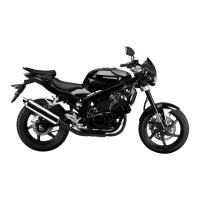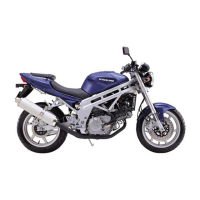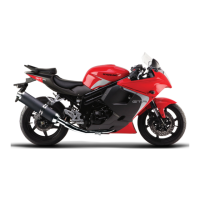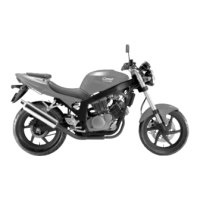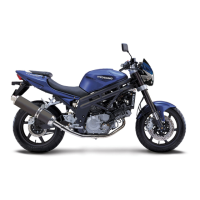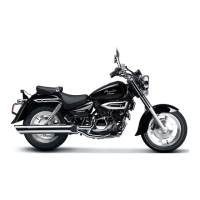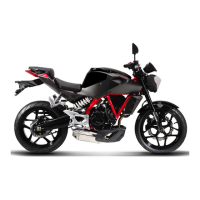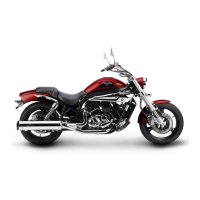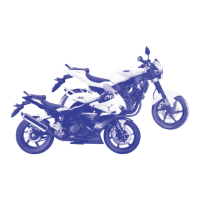
Do you have a question about the HYOSUNG GT250 REi and is the answer not in the manual?
| Displacement | 249 cc |
|---|---|
| Fuel System | Fuel Injection |
| Rear Suspension | Swingarm with Monoshock |
| Front Brake | Single Disc |
| Rear Brake | Single Disc |
| Fuel Capacity | 17 liters |
| Seat Height | 780 mm |
| Engine Type | 4-stroke |
| Cooling System | Oil-cooled |
| Max Power | 28 hp @ 10, 000 rpm |
| Max Torque | 22.07 Nm @ 8, 000 rpm |
| Transmission | 5-speed |
| Front Suspension | Telescopic fork |
Guidelines for proper break-in procedures to ensure maximum life and performance.
Precautions and advice for safe motorcycle riding practices.
Recommended unleaded gasoline type and octane rating for optimal performance.
Specifications and viscosity recommendations for engine oil based on temperature.
Details on the three positions of the ignition switch and steering lock.
Indicates engine speed in revolutions per minute (rpm).
Displays the remaining fuel amount in the fuel tank.
Displays total distance and resettable trip distances.
Displays the current time in a 12-hour format.
Used for disengaging drive to the rear wheel for starting or shifting.
Changes the direction of the headlamp light between high and low beam.
Controls engine operation, cutting power in emergencies.
Operates the left and right turn signal lamps.
Adjusting footrest position for rider comfort and control.
Precautions and procedures for refueling the fuel tank safely.
Procedure for checking the engine oil level using the sight glass.
Steps and checks required before starting the motorcycle's engine.
Recommended throttle limits during the initial break-in period.
Guidance to avoid glazing and ensure proper seating of engine parts.
Importance of varying engine speed for optimal part mating.
List and description of the tool kit supplied with the motorcycle.
Procedure for adjusting the clutch cable free play.
Guidelines for inspecting the drive chain for wear and damage.
Procedure for adjusting the drive chain slack and alignment.
Checking and replenishing brake fluid levels and types.
Procedure for inspecting and replacing worn brake pads.
Maintaining correct tire pressure for safety and performance.
Checking tires for visible cracks, cuts, and abnormal wear.
Inspecting tire tread depth using wear indicators.
Troubleshooting steps for an engine that will not start.
Procedure for safely emptying the fuel tank before transport.
Steps for washing the motorcycle using low-pressure water and mild soap.
Instructions for cleaning the windshield with soft cloth and mild detergent.
General guidelines for preparing the motorcycle for long-term storage.
Procedure for removing, cleaning, and storing the battery.
Key physical dimensions and weight specifications of the motorcycle.
Technical specifications for the motorcycle's engine.
Specifications for the clutch, reduction ratio, drive chain, and gear ratios.
Specifications related to the motorcycle's frame, suspension, and wheels.
Specifications for ignition, battery, fuses, and lighting systems.
Fluid capacities for fuel tank and engine oil.
